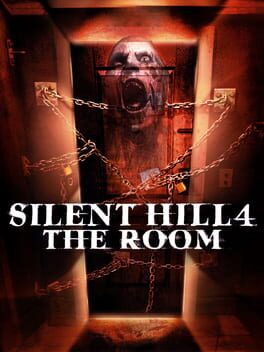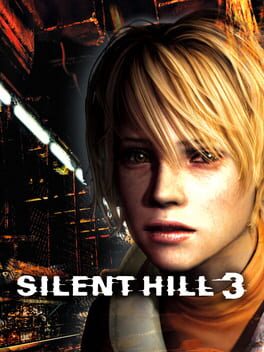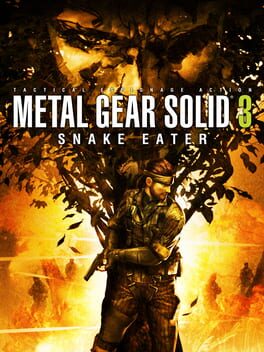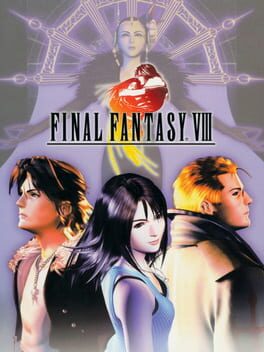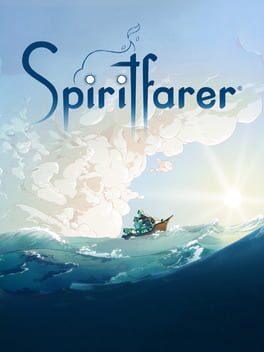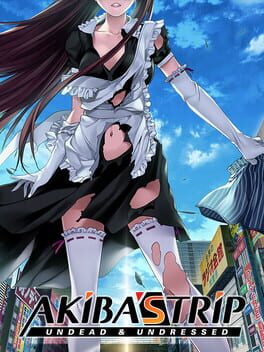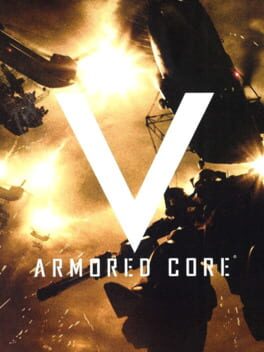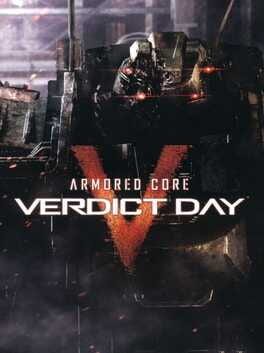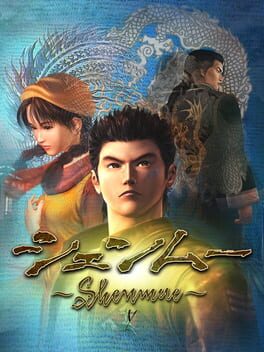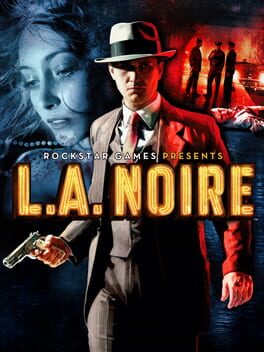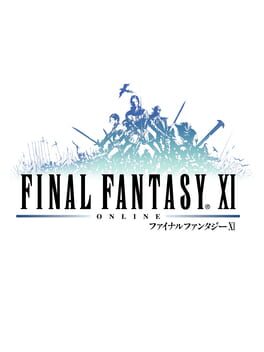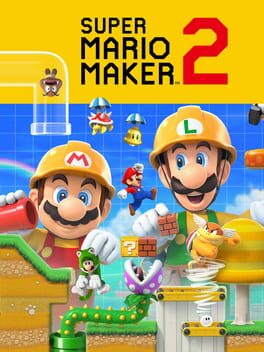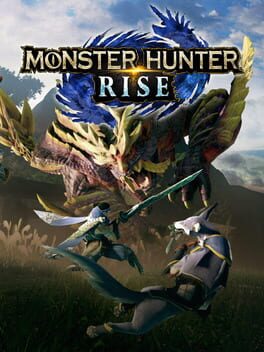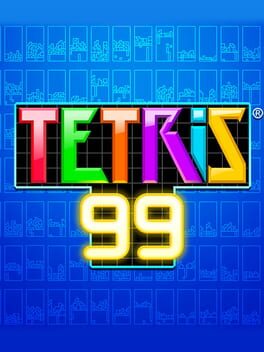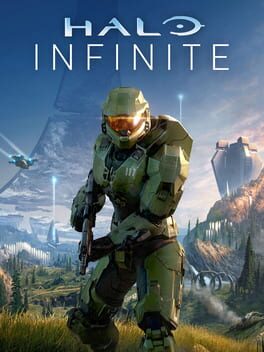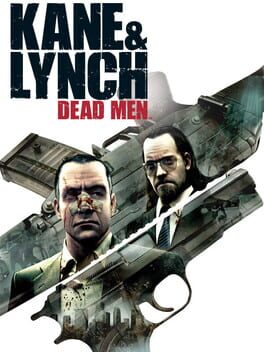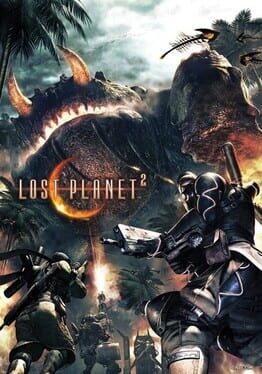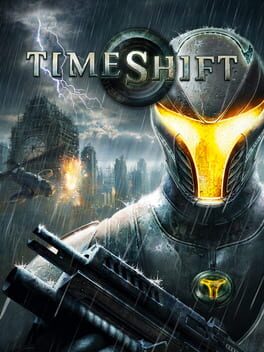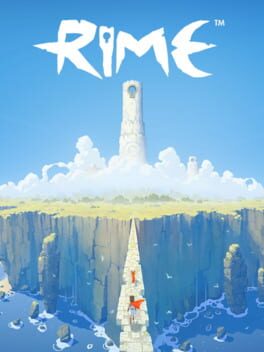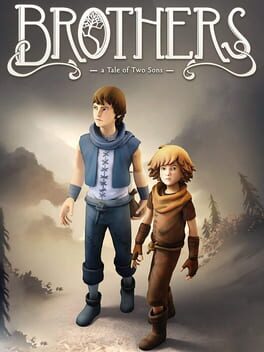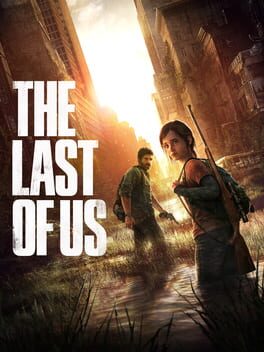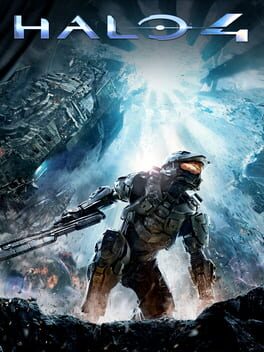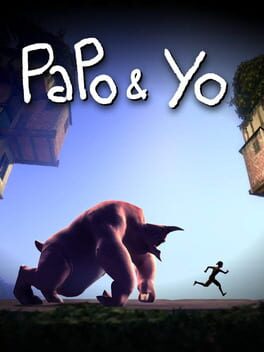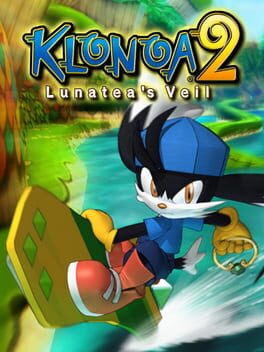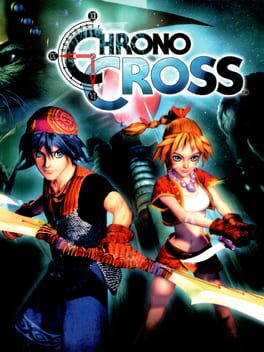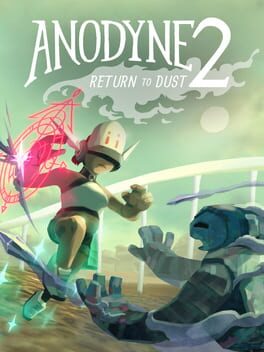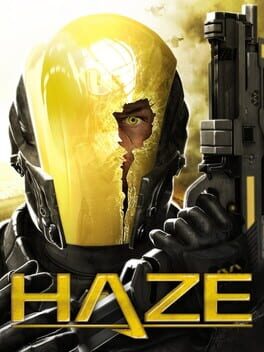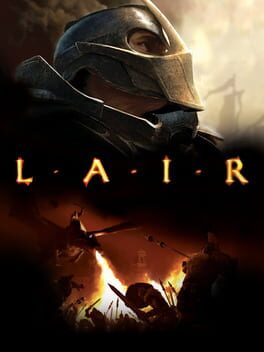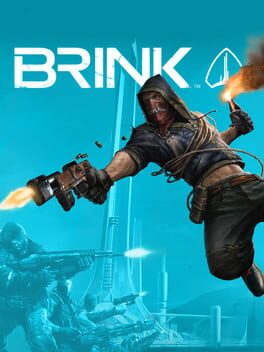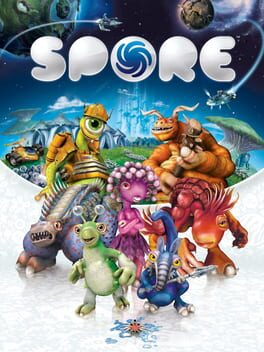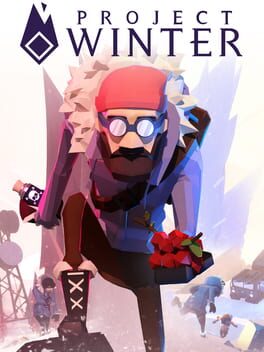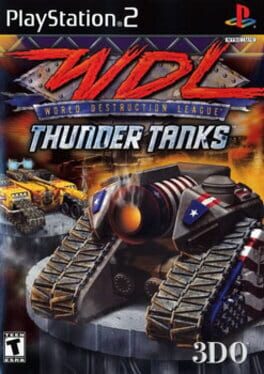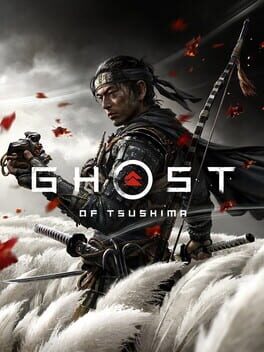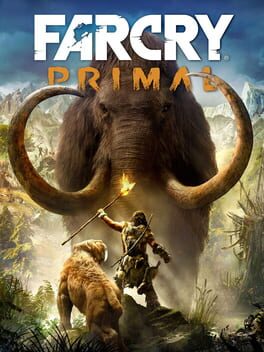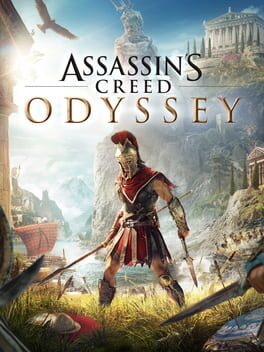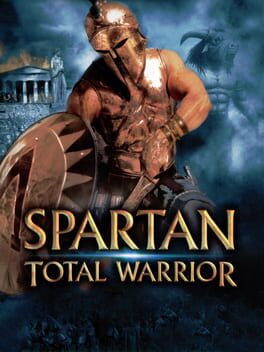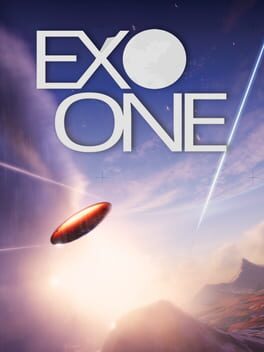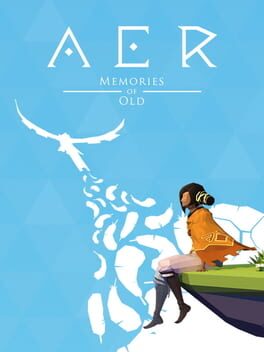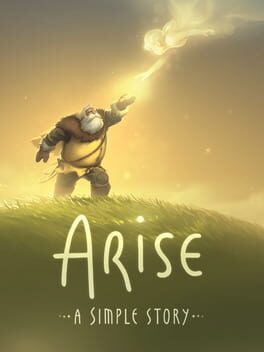Kuryleon
7 reviews liked by Kuryleon
Scratch my old rating, I'm bumping this to 4.5 stars now that I have completed my playthrough on hard. The pacing of this game is still undeniably fucked (especially compared to the original), but it's significantly less bothersome the second time around.
The thing is, I was so enamoured by the world, story, and characters of this game that I binged my first playthrough in a matter of a few days, which takes a poorly paced game and makes it even worse. Being forced to fight a million bullet-spongey bosses and having to go through the many blatantly drawn-out and uninspired connecting levels that bridge the game's more interesting areas and set pieces hence frequently felt like a chore to someone like me, eager to advance the story. Moreover, it took me quite a while to befriend this game's combat system on my first playthrough, so the damage was already done by the time I had really started to appreciate it for what it is. But with the gameplay being a much stronger intrinsic motivator for my hard playthrough, I at least enjoyed most of my combat encounters this time around. Doesn't mean I don't still want to have a word or two with whoever thought it a good idea to bloat these levels with boring filler obstacles that are always repeated three or four times over. Even the mostly enjoyable banter between the characters couldn't entirely redeem some of these levels for me—I mean Christ, I'm half-convinced that these slow ass robot arms are a subtle form of psychological torture, and you'll have to trudge through this area three fucking times (not even counting mandatory backtracking) for 100% completion.
One thing that I'm also not too hot on is the game's insistence on sluggishly "cinematic" character controls (outside of combat, that is), and, tied to this, the overabundance of physical loading gates that require painfully slow animations to overcome. Moreover, there is a constant struggle going between this game and the player over who gets to control the player character, and while the frequent transitions between cutscenes, semi-controllable sequences and fully controllable sequences are remarkably smooth on a visual level, the controls often lag behind, leading to many moments of delayed responsiveness (aka the mortifying ordeal of pressing a button with no in-game response). Constantly being forced to slowly walk or jog is very annoying as well, which I suspect might also be partially tied to loading issues, but maybe the developers were also afraid that the player would simply rush through their carefully crafted environments. Alas, they worried in vain: as someone who can spend hours in photo mode, I absolutely love to slow down in games and enjoy the beautiful scenery and atmosphere whenever presented with the opportunity—but I just don't want to be forced to do it through sluggish controls. Relatively realistic character movement can be appropriate for certain types of realistically told, cinematic games like The Last of Us (which also intrinsically pulls this off better), but when it comes to bombastic action titles where your character performs outlandish acrobatics while wielding a sword the size of a snowboard, I vastly, vastly prefer the smooth, quick, elegant, responsive controls of something like NieR: Automata.
So far these control issues are related to non-combat sequences, so let's look at the other side of the coin. As I said, I ultimately enjoyed the combat enough to play this a second time, intrigued by the additional gameplay constraints on hard that really force you to master the combat and not rely on item spam. Either way, I'm happy to say that Remake is for the most part an outstanding action title. Turns out that using abilities in bullet time is a surprisingly effective (not to mention visually spectacular) synthesis between modern action game sensibilities and the active time-based roots of the original title. Changing between party members in real time also adds a welcome layer of variation and tactical possibilities that I greatly enjoyed. That said, while overall I do love the combat here, it effectively capitalizes on its excellent premise only about 80% of the time. Unfortunately, the devil is in the details, and so the remaining 20% could still feel really stupid and frustrating even the second time around: there can be way too much annoying stunlock, dodging oftentimes doesn't feel as effective as it should, the camera and lock-on mechanics can feel rather clumsy at times—nothing fundamentally broken, but still in definite need of further refinement. Also, it would be nice to have savable, character-specific loadouts to avoid manually switching Materia between battles. A whole lot of time spent in menus in this game.
As for the game's sights and sounds: obviously spectacular. Killer soundtrack, stunning vistas, seemingly infinite animation budget, some of the best damn lighting I have seen in any game. Yeah, there are some texture issues here and there, but they rarely distract from the overall impression.
I'm not interested in discussing the story in any depth here, so I will only briefly touch on a few things. Firstly, of course the premise of a tight-knit group of earnest resistance fighters (who are also all sexy bastards) opposing an authoritarian, ultra-capitalist regime is totally my shit. The plot may be a bunch of fucking nonsense, but that is hardly important, because as long as you have interesting themes, characters, and worldbuilding to ground your plot, disbelief can be easily suspended. I'm also very much digging the tonal shifts between the game's over the top theatrics, joyful frivolity, and occasional moments of quiet beauty (the rooftop stroll was possibly my favourite moment from my first playthrough). Lastly, I'm actually quite fascinated by the meta-narrative that is interwoven here. Clearly, this part features a ton of setup for some big departures awaiting us in future installments, and while this could still potentially end up in disaster, for now I am cautiously optimistic, given the immense effort that Square is pouring into this remake saga, coupled with the genuine care and understanding this first part has already displayed for the original characters. I hope that the upcoming parts will continue this balancing act of deconstructing the traditional remake while also staying true to the original game, so that we ultimately end up with two complimentary versions of FFVII. Faithful, high-quality remakes like Bluepoint's 2018 Shadow of the Colossus are certainly nice to have, but in general I think that treating remakes as an opportunity for meaningful evolution and commentary is a more worthwhile direction to go for this art form.
Anyway, could have been an easy 5.0 star game without all the aforementioned caveats, even top 10 material.
The thing is, I was so enamoured by the world, story, and characters of this game that I binged my first playthrough in a matter of a few days, which takes a poorly paced game and makes it even worse. Being forced to fight a million bullet-spongey bosses and having to go through the many blatantly drawn-out and uninspired connecting levels that bridge the game's more interesting areas and set pieces hence frequently felt like a chore to someone like me, eager to advance the story. Moreover, it took me quite a while to befriend this game's combat system on my first playthrough, so the damage was already done by the time I had really started to appreciate it for what it is. But with the gameplay being a much stronger intrinsic motivator for my hard playthrough, I at least enjoyed most of my combat encounters this time around. Doesn't mean I don't still want to have a word or two with whoever thought it a good idea to bloat these levels with boring filler obstacles that are always repeated three or four times over. Even the mostly enjoyable banter between the characters couldn't entirely redeem some of these levels for me—I mean Christ, I'm half-convinced that these slow ass robot arms are a subtle form of psychological torture, and you'll have to trudge through this area three fucking times (not even counting mandatory backtracking) for 100% completion.
One thing that I'm also not too hot on is the game's insistence on sluggishly "cinematic" character controls (outside of combat, that is), and, tied to this, the overabundance of physical loading gates that require painfully slow animations to overcome. Moreover, there is a constant struggle going between this game and the player over who gets to control the player character, and while the frequent transitions between cutscenes, semi-controllable sequences and fully controllable sequences are remarkably smooth on a visual level, the controls often lag behind, leading to many moments of delayed responsiveness (aka the mortifying ordeal of pressing a button with no in-game response). Constantly being forced to slowly walk or jog is very annoying as well, which I suspect might also be partially tied to loading issues, but maybe the developers were also afraid that the player would simply rush through their carefully crafted environments. Alas, they worried in vain: as someone who can spend hours in photo mode, I absolutely love to slow down in games and enjoy the beautiful scenery and atmosphere whenever presented with the opportunity—but I just don't want to be forced to do it through sluggish controls. Relatively realistic character movement can be appropriate for certain types of realistically told, cinematic games like The Last of Us (which also intrinsically pulls this off better), but when it comes to bombastic action titles where your character performs outlandish acrobatics while wielding a sword the size of a snowboard, I vastly, vastly prefer the smooth, quick, elegant, responsive controls of something like NieR: Automata.
So far these control issues are related to non-combat sequences, so let's look at the other side of the coin. As I said, I ultimately enjoyed the combat enough to play this a second time, intrigued by the additional gameplay constraints on hard that really force you to master the combat and not rely on item spam. Either way, I'm happy to say that Remake is for the most part an outstanding action title. Turns out that using abilities in bullet time is a surprisingly effective (not to mention visually spectacular) synthesis between modern action game sensibilities and the active time-based roots of the original title. Changing between party members in real time also adds a welcome layer of variation and tactical possibilities that I greatly enjoyed. That said, while overall I do love the combat here, it effectively capitalizes on its excellent premise only about 80% of the time. Unfortunately, the devil is in the details, and so the remaining 20% could still feel really stupid and frustrating even the second time around: there can be way too much annoying stunlock, dodging oftentimes doesn't feel as effective as it should, the camera and lock-on mechanics can feel rather clumsy at times—nothing fundamentally broken, but still in definite need of further refinement. Also, it would be nice to have savable, character-specific loadouts to avoid manually switching Materia between battles. A whole lot of time spent in menus in this game.
As for the game's sights and sounds: obviously spectacular. Killer soundtrack, stunning vistas, seemingly infinite animation budget, some of the best damn lighting I have seen in any game. Yeah, there are some texture issues here and there, but they rarely distract from the overall impression.
I'm not interested in discussing the story in any depth here, so I will only briefly touch on a few things. Firstly, of course the premise of a tight-knit group of earnest resistance fighters (who are also all sexy bastards) opposing an authoritarian, ultra-capitalist regime is totally my shit. The plot may be a bunch of fucking nonsense, but that is hardly important, because as long as you have interesting themes, characters, and worldbuilding to ground your plot, disbelief can be easily suspended. I'm also very much digging the tonal shifts between the game's over the top theatrics, joyful frivolity, and occasional moments of quiet beauty (the rooftop stroll was possibly my favourite moment from my first playthrough). Lastly, I'm actually quite fascinated by the meta-narrative that is interwoven here. Clearly, this part features a ton of setup for some big departures awaiting us in future installments, and while this could still potentially end up in disaster, for now I am cautiously optimistic, given the immense effort that Square is pouring into this remake saga, coupled with the genuine care and understanding this first part has already displayed for the original characters. I hope that the upcoming parts will continue this balancing act of deconstructing the traditional remake while also staying true to the original game, so that we ultimately end up with two complimentary versions of FFVII. Faithful, high-quality remakes like Bluepoint's 2018 Shadow of the Colossus are certainly nice to have, but in general I think that treating remakes as an opportunity for meaningful evolution and commentary is a more worthwhile direction to go for this art form.
Anyway, could have been an easy 5.0 star game without all the aforementioned caveats, even top 10 material.
Whilst Silent Hill 2 is an eerie masterclass in precise unnerving, Silent Hill 4: The Room is an exercise in chaos and instability.
I have a strong feeling Hideo Kojima's now-mythical Silent Hills project would've taken inspiration very much from this title. Not only does the legendary PT owe a great deal to the first person segments in the titular room, but the way in which this game messes with the player would've greatly informed Kojima's incorporation of his games' usual self-awareness (allegedly, Silent Hills would make use of sending messages to the player outside of the game and was intended to 'curse' the Playstation console).
The same cursed quality can be found in the polarising, jagged roughness of The Room. The game feels unfinished, almost dangerous, making virtue of glitching (the 'Braintree' ghost), screen distortion and even stock sounds such as monkeys, tigers and, most uncanny of them all, burping.
The game also consciously tortures the player: the safe room that restores your health becomes cursed with horrific apparitions that can kill you; some enemies can't be killed, forcing you to run away or rush through an important segment; you can pick up certain items which cause bad or strange things to happen, such as moving through the same outdoor space over and over again until you drop the item.
All of these things are truly frustrating but arguably vital - the first Silent Hill is oppresive in atmosphere, whereas the fourth is oppressive in gameplay, giving sense that you have no control over the grim supernatural serial killer story (The Frighteners, anyone?).
I could very well be an apologist for such loathsome gameplay mechanics, but it just wouldn't be the same horror experience if it were any cleaner. Since when did horror have to be clean, anyway?
I have a strong feeling Hideo Kojima's now-mythical Silent Hills project would've taken inspiration very much from this title. Not only does the legendary PT owe a great deal to the first person segments in the titular room, but the way in which this game messes with the player would've greatly informed Kojima's incorporation of his games' usual self-awareness (allegedly, Silent Hills would make use of sending messages to the player outside of the game and was intended to 'curse' the Playstation console).
The same cursed quality can be found in the polarising, jagged roughness of The Room. The game feels unfinished, almost dangerous, making virtue of glitching (the 'Braintree' ghost), screen distortion and even stock sounds such as monkeys, tigers and, most uncanny of them all, burping.
The game also consciously tortures the player: the safe room that restores your health becomes cursed with horrific apparitions that can kill you; some enemies can't be killed, forcing you to run away or rush through an important segment; you can pick up certain items which cause bad or strange things to happen, such as moving through the same outdoor space over and over again until you drop the item.
All of these things are truly frustrating but arguably vital - the first Silent Hill is oppresive in atmosphere, whereas the fourth is oppressive in gameplay, giving sense that you have no control over the grim supernatural serial killer story (The Frighteners, anyone?).
I could very well be an apologist for such loathsome gameplay mechanics, but it just wouldn't be the same horror experience if it were any cleaner. Since when did horror have to be clean, anyway?
Silent Hill 3
2003
Now that the franchise is plagued with a bunch of Silent Hill 2 imitators, it's striking and quaint to see how quickly its direct sequel distanced itself from many of SH2's touted hallmarks that seemed like the success formula to exploit from then on. Silent Hill 3 doesn't waste much time with preambles, knowing already what you came here to see, and presents itself as the most predatory entry in the series, with highly aggressive and pursuing enemies, unlike the more passive and slow moving foes of SH1 and SH2, a very limited item and ammo count that forces you into a constant fight-or-flight response state that wasn't present in the series before, and more expansive and disorienting spaces to trudge through that more often than not have you staring into deep darkness as you scramble for a way out with monsters bitting at your heels.
Silent Hill 3 takes the unrelenting nature of the Historical Society stretch in SH2 and extends it into a full game. The Otherworld is ramped up even further as one of the most nightmarish settings every produced in videogames, filling it with bloody and rusty metal, grotesque disfigured monsters, dream-like disturbing visions, and disquieting noises that constantly make you feel like something is about to come out of the walls. The soundscape of SH3 might be Yamaoka's best work in the series, shifting the indiferent and somber tone of the previous entries into a much more hostile and invanding presence that assaults your ears constantly. Of the trilogy, SH3 is without a doubt the deliberately scariest one of the bunch, and bluntly makes its case as to not be fucked around it.
Which is why it's fascinating how much the main protagonist undercuts that vicious horror with her disinterested personality and musings on the whole ordeal. Beyond having a natural knack for making every interaction with the antagonists feel like a sitcom during cutscenes, Heather's charismatic remarks and quips during exploration create a certain detachment between her and the player's control, that wasn't as present in Harry's passive voyeurism or Jame's ambivalent resignation. SH3 puts tremendous effort in its oppression of the player, and yet Heather ain't having none of that shit. It's easy to understand why SH3 doesn't enjoy the same prestige and adoration that its prequel does, and I can't really blame people for that. SH2 interweaves both text and subtext so seamlessly that interpretation becomes highly accessible for anyone who experiences it, unlike SH3's more metatextual concepts that can easily be ignored if you just take the plot at face value.
But if your take away after playing the whole game, and witnessing Heather abort a God inside a church at the end, is that Silent Hill 3 disappointingly doesn't contain psychological horror and is just another devil cult story with little substance, then I'm afraid you missed the forest for the trees. There's an ever present underlying theme that permeates most of SH3 of imposed expectations of young women, that extends beyond its devil cult plot and impregnates with meaning the institutionalized settings of the game and its towering and stalking monsters that constantly harrass Heather. And having such an ubiquitous character push back the assaulting nature of SH3, mocking and making light of its villains, and in the process the Silent Hill concept itself, makes for a very refreshing and compelling subversion of what came before it.
We will never know what Silent Hill 3 could have been if it had gone the same route as Silent Hill 2. Hell, we will never know what it could have been if it had been a rail shooter, like intended. But this is the Silent Hill 3 we got, and I wouldn't have it any other way.
Silent Hill 3 takes the unrelenting nature of the Historical Society stretch in SH2 and extends it into a full game. The Otherworld is ramped up even further as one of the most nightmarish settings every produced in videogames, filling it with bloody and rusty metal, grotesque disfigured monsters, dream-like disturbing visions, and disquieting noises that constantly make you feel like something is about to come out of the walls. The soundscape of SH3 might be Yamaoka's best work in the series, shifting the indiferent and somber tone of the previous entries into a much more hostile and invanding presence that assaults your ears constantly. Of the trilogy, SH3 is without a doubt the deliberately scariest one of the bunch, and bluntly makes its case as to not be fucked around it.
Which is why it's fascinating how much the main protagonist undercuts that vicious horror with her disinterested personality and musings on the whole ordeal. Beyond having a natural knack for making every interaction with the antagonists feel like a sitcom during cutscenes, Heather's charismatic remarks and quips during exploration create a certain detachment between her and the player's control, that wasn't as present in Harry's passive voyeurism or Jame's ambivalent resignation. SH3 puts tremendous effort in its oppression of the player, and yet Heather ain't having none of that shit. It's easy to understand why SH3 doesn't enjoy the same prestige and adoration that its prequel does, and I can't really blame people for that. SH2 interweaves both text and subtext so seamlessly that interpretation becomes highly accessible for anyone who experiences it, unlike SH3's more metatextual concepts that can easily be ignored if you just take the plot at face value.
But if your take away after playing the whole game, and witnessing Heather abort a God inside a church at the end, is that Silent Hill 3 disappointingly doesn't contain psychological horror and is just another devil cult story with little substance, then I'm afraid you missed the forest for the trees. There's an ever present underlying theme that permeates most of SH3 of imposed expectations of young women, that extends beyond its devil cult plot and impregnates with meaning the institutionalized settings of the game and its towering and stalking monsters that constantly harrass Heather. And having such an ubiquitous character push back the assaulting nature of SH3, mocking and making light of its villains, and in the process the Silent Hill concept itself, makes for a very refreshing and compelling subversion of what came before it.
We will never know what Silent Hill 3 could have been if it had gone the same route as Silent Hill 2. Hell, we will never know what it could have been if it had been a rail shooter, like intended. But this is the Silent Hill 3 we got, and I wouldn't have it any other way.
Metal Gear Solid 3: Snake Eater is a masterpiece. It shows strength in all areas of gaming, graphics and uniqueness included. I've lost count of how many times I've beaten it. Every time I play it, I discover something new about the game play or story. It is one of those games that you can never really get tired of.
The game is close to achieving perfection with amazing graphics, terrific game play, awesome boss battles and compelling storyline with some of the fantastic cut scenes that surpass the ridiculously insane level of Rambo films and others like it. It is impossible to be moved by the ending, but this game did for me. The epic scope of the game is a clear case that sometimes playing a video game is better than going to the movies at a certain time period when there are too few good movies to see. Metal Gear Solid 3 is an incredible achievement in video gaming from the standpoint of my experience playing the game from beginning to end.
The storyline has its fair share of twists and interesting side-plots, making the game more fun to play. The way the codec system is done makes for a lot of potential suspense, and the developers didn't fail to take advantage of this. The only shaky part of the storyline is the dialogue, which usually fits, but the emotion put out by the voice actors isn't always... correct. That leads me to my next subject.
The music in the game is very well done. Though it's not the stuff you'd listen to on a long car trip (or maybe you would, who knows), it is very fitting of the situation. Like the graphic attention-to-detail, it really serves to help you feel like you are in the jungle fighting/sneaking past enemies. The ambient sounds also serve the same purpose, when you aren't getting chased by enemies the music is usually either really dim or not there, leaving only the many sounds of the jungle, and many sounds there are. Birds chirping, frogs croaking, grass rustling as hissing snakes slither through the underbrush, all of these sounds are present in Snake Eater.
Though MGS3 is really meant to be a game that excels in the area of storyline, much action is present. Boss fights are where most of it happens, but if you are frustrated about having to sneak everywhere, and you wanna go Vice City/San Andreas on someones ass, all you have to do is whip out your handy-dandy... sorry, not notebook, but AK-47. Feel free to waste away your enemies while the realistic movement of the gun and flashy effects of explosions and gunshots give you some real eye-candy. Though the game is meant to be mostly about sneaking, with some forced action involved, you can go crazy with your guns if you feel like it, and many times it is just as effective, even if it does get you a little more chewed up than sneaking does.
Hideo Kojima never ceases to amaze me, besides the fact that Snake (A.K.A Big Boss) looks amazingly like Kurt Russell from "Escape From New York" in this game, the characters look and feel more realistic than anything ever attempted with video games. Since video games where invented they have been shrugged off by the other media's as inferior and childish, I have a feeling that that time is quickly coming to an end.
The game is close to achieving perfection with amazing graphics, terrific game play, awesome boss battles and compelling storyline with some of the fantastic cut scenes that surpass the ridiculously insane level of Rambo films and others like it. It is impossible to be moved by the ending, but this game did for me. The epic scope of the game is a clear case that sometimes playing a video game is better than going to the movies at a certain time period when there are too few good movies to see. Metal Gear Solid 3 is an incredible achievement in video gaming from the standpoint of my experience playing the game from beginning to end.
The storyline has its fair share of twists and interesting side-plots, making the game more fun to play. The way the codec system is done makes for a lot of potential suspense, and the developers didn't fail to take advantage of this. The only shaky part of the storyline is the dialogue, which usually fits, but the emotion put out by the voice actors isn't always... correct. That leads me to my next subject.
The music in the game is very well done. Though it's not the stuff you'd listen to on a long car trip (or maybe you would, who knows), it is very fitting of the situation. Like the graphic attention-to-detail, it really serves to help you feel like you are in the jungle fighting/sneaking past enemies. The ambient sounds also serve the same purpose, when you aren't getting chased by enemies the music is usually either really dim or not there, leaving only the many sounds of the jungle, and many sounds there are. Birds chirping, frogs croaking, grass rustling as hissing snakes slither through the underbrush, all of these sounds are present in Snake Eater.
Though MGS3 is really meant to be a game that excels in the area of storyline, much action is present. Boss fights are where most of it happens, but if you are frustrated about having to sneak everywhere, and you wanna go Vice City/San Andreas on someones ass, all you have to do is whip out your handy-dandy... sorry, not notebook, but AK-47. Feel free to waste away your enemies while the realistic movement of the gun and flashy effects of explosions and gunshots give you some real eye-candy. Though the game is meant to be mostly about sneaking, with some forced action involved, you can go crazy with your guns if you feel like it, and many times it is just as effective, even if it does get you a little more chewed up than sneaking does.
Hideo Kojima never ceases to amaze me, besides the fact that Snake (A.K.A Big Boss) looks amazingly like Kurt Russell from "Escape From New York" in this game, the characters look and feel more realistic than anything ever attempted with video games. Since video games where invented they have been shrugged off by the other media's as inferior and childish, I have a feeling that that time is quickly coming to an end.
Final Fantasy VIII
1999
While I cannot in good conscience call it perfect, or even the best Final Fantasy game, Final Fantasy VIII is indeed a contender for my favorite video game. It is an acquired taste, but should you be a part of the very specific audience that it is aimed at, then there truly is nothing else like it.
FFVIII is best described as abstract: it doesn’t have as solidly defined a setting as some of its contemporaries, its gameplay is much more open-ended and left up to the player’s discretion in terms of strategy, the narrative is loose at best, and its themes and message are an odd hodgepodge of several interconnected ideas and theories rather than a single, concrete point. What FFVIII does have to offer is raw feeling, a poignance about its atmosphere and what it conveys with its storytelling that resonates profoundly if you’re willing to play by its rules (or are naturally dispositioned towards some of its ideas to begin with).
The plot, on paper, is simple enough: in a colorful high-Fantasy-turned-science fiction setting, we follow Squall Leonhart, a child soldier turned mercenary who has little ambition or purpose in life other than to become a competent, respected SeeD (for-profit mercenary). When a mission he and his team are hired for goes awry, Squall finds himself in the midst of a global conspiracy involving an ongoing global war and a mysterious, maleficent sorceress at the helm of it all. Most of the story involves Squall’s struggle to understand and accept his role in the global crisis as well as understand himself, and his growing bond with secondary protagonist Rinoa Heartilly (a member of a resistance sect poised against the ruthless imperialist nation of Galbadia).
From there... things get weird.
The plot is compelling in its own right and features a few fun (if not sometimes contrived or predictable) plot twists, but ultimately takes a backseat to the purpose it serves: establishing, developing and growing Squall and Rinoa’s characters. While plot events often have substantial narrative weight, most of what you’ll gleam from them (and want to look for) is what they tell you about the characters and the insight into their psyches. FFVIII addresses a great variety of topics that all interlink together in a tight-wound web of themes, ranging from trauma to war to time to family, all of which reflect heavily on the characters’ emotional development and personalities. Character writing is truly where FFVIII shines, and the little pieces of interaction between the cast are what will stick with you more than the bombastic action sequences. It’s a rare feat for a simple conversation or flashback to be more memorable than a fully-animated FMV sequence, but these small moments of interaction and connection are what I find myself thinking about the most often and remembering the most fondly.
Beyond our two protagonists, FFVIII has a somewhat small but lovable and memorable cast, set aside from most other Final Fantasy titles in that they’re mostly believable everyday people. As such, their characters are often not as complex or layered as the series makes a habit out of committing to, but FFVIII manages to make simplicity work in the most endearing of ways: some of the game’s most charming and enduring characters are the Momma’s-boy Zell Dincht who lives at home with his mother and has a passion for mixed martial arts, the smug and conceited teacher Quistis Trepe who acts as Squall’s mentor, and the cocky country-boy Irvine Kinneas who transfers to Squall’s team as a sharpshooter. Some of these characters transcend the convention one might associate with their description, while others embody them so wholly and blatantly that they become brilliant. FFVIII’s cast might hold hidden depths, or they might really be genuine with who they are and exemplify it to the fullest.
FFVIII’s gameplay is a controversial topic, and most often why people disparage the game if not for a dislike of Squall’s distant personality. This is understandable: it’s quite intricate and unconventional, and rarely does the game do a good job of explaining how to use it to the fullest. FFVIII retires the JRPG standard of mana meters and spell learning in favor of magic being dispensable items that can either be used in combat, or equipped (“junctioned” in game terms) to the player’s stats rather than armor or accessories, replacing level grinding as the proper method to grow characters’ stats. Said magic can be refined from cards won in the game’s Triple Triad minigame (the most efficient way of earning magic, despite the game never clarifying this) or “drawn” from enemies during combat as well as specific points in the world map. Junctioning is performed via Guardian Forces, equippable summons that each carry unique abilities and characteristics of their own. It’s true that FFVIII’s complex systems can be overwhelming and disorienting for those used to a conventional JRPG experience, but if learned and understood the amount of customization and optimization is unparalleled especially for the time period. Even if the story and characters don’t appeal to you, if you have any investment in JRPG gameplay for the sake of gameplay then it doesn’t get better than FFVIII’s complex statistic management systems.
Finally... the music. It’s incredible, one of my favorites in any game, and is worked into the storytelling in a very unique way. The scenes which take place in the present day have a sweeping, fully-orchestrated sound whereas those that take place in flashbacks to the distant past have a high-tech futuristic sound, a fun inversion of the standard one might expect from or associate with conventions of the genres.
With all of this being said: FFVIII is a unique game that caters to a very specific audience, and it banks entirely on whether or not you “get it.” If you do, you do, and if you don’t, you don’t. It’s very possible it may not simply be for you, but the best way to find out is to jump in with an open mind (and a willingness to lead the game’s systems!).
For me...? It means more to me personally than I can say, and I can only hope you’ll find as much in it as I have.
FFVIII is best described as abstract: it doesn’t have as solidly defined a setting as some of its contemporaries, its gameplay is much more open-ended and left up to the player’s discretion in terms of strategy, the narrative is loose at best, and its themes and message are an odd hodgepodge of several interconnected ideas and theories rather than a single, concrete point. What FFVIII does have to offer is raw feeling, a poignance about its atmosphere and what it conveys with its storytelling that resonates profoundly if you’re willing to play by its rules (or are naturally dispositioned towards some of its ideas to begin with).
The plot, on paper, is simple enough: in a colorful high-Fantasy-turned-science fiction setting, we follow Squall Leonhart, a child soldier turned mercenary who has little ambition or purpose in life other than to become a competent, respected SeeD (for-profit mercenary). When a mission he and his team are hired for goes awry, Squall finds himself in the midst of a global conspiracy involving an ongoing global war and a mysterious, maleficent sorceress at the helm of it all. Most of the story involves Squall’s struggle to understand and accept his role in the global crisis as well as understand himself, and his growing bond with secondary protagonist Rinoa Heartilly (a member of a resistance sect poised against the ruthless imperialist nation of Galbadia).
From there... things get weird.
The plot is compelling in its own right and features a few fun (if not sometimes contrived or predictable) plot twists, but ultimately takes a backseat to the purpose it serves: establishing, developing and growing Squall and Rinoa’s characters. While plot events often have substantial narrative weight, most of what you’ll gleam from them (and want to look for) is what they tell you about the characters and the insight into their psyches. FFVIII addresses a great variety of topics that all interlink together in a tight-wound web of themes, ranging from trauma to war to time to family, all of which reflect heavily on the characters’ emotional development and personalities. Character writing is truly where FFVIII shines, and the little pieces of interaction between the cast are what will stick with you more than the bombastic action sequences. It’s a rare feat for a simple conversation or flashback to be more memorable than a fully-animated FMV sequence, but these small moments of interaction and connection are what I find myself thinking about the most often and remembering the most fondly.
Beyond our two protagonists, FFVIII has a somewhat small but lovable and memorable cast, set aside from most other Final Fantasy titles in that they’re mostly believable everyday people. As such, their characters are often not as complex or layered as the series makes a habit out of committing to, but FFVIII manages to make simplicity work in the most endearing of ways: some of the game’s most charming and enduring characters are the Momma’s-boy Zell Dincht who lives at home with his mother and has a passion for mixed martial arts, the smug and conceited teacher Quistis Trepe who acts as Squall’s mentor, and the cocky country-boy Irvine Kinneas who transfers to Squall’s team as a sharpshooter. Some of these characters transcend the convention one might associate with their description, while others embody them so wholly and blatantly that they become brilliant. FFVIII’s cast might hold hidden depths, or they might really be genuine with who they are and exemplify it to the fullest.
FFVIII’s gameplay is a controversial topic, and most often why people disparage the game if not for a dislike of Squall’s distant personality. This is understandable: it’s quite intricate and unconventional, and rarely does the game do a good job of explaining how to use it to the fullest. FFVIII retires the JRPG standard of mana meters and spell learning in favor of magic being dispensable items that can either be used in combat, or equipped (“junctioned” in game terms) to the player’s stats rather than armor or accessories, replacing level grinding as the proper method to grow characters’ stats. Said magic can be refined from cards won in the game’s Triple Triad minigame (the most efficient way of earning magic, despite the game never clarifying this) or “drawn” from enemies during combat as well as specific points in the world map. Junctioning is performed via Guardian Forces, equippable summons that each carry unique abilities and characteristics of their own. It’s true that FFVIII’s complex systems can be overwhelming and disorienting for those used to a conventional JRPG experience, but if learned and understood the amount of customization and optimization is unparalleled especially for the time period. Even if the story and characters don’t appeal to you, if you have any investment in JRPG gameplay for the sake of gameplay then it doesn’t get better than FFVIII’s complex statistic management systems.
Finally... the music. It’s incredible, one of my favorites in any game, and is worked into the storytelling in a very unique way. The scenes which take place in the present day have a sweeping, fully-orchestrated sound whereas those that take place in flashbacks to the distant past have a high-tech futuristic sound, a fun inversion of the standard one might expect from or associate with conventions of the genres.
With all of this being said: FFVIII is a unique game that caters to a very specific audience, and it banks entirely on whether or not you “get it.” If you do, you do, and if you don’t, you don’t. It’s very possible it may not simply be for you, but the best way to find out is to jump in with an open mind (and a willingness to lead the game’s systems!).
For me...? It means more to me personally than I can say, and I can only hope you’ll find as much in it as I have.
"Nier is not an action game. It is an experiment. This statement is true of both Nier (2010) (released with this title in the United States, but as two separate titles in Japan — Nier Gestalt and Nier Replicant) and the new “version upgrade,” Nier Replicant ver.1.22474487139... (2021). But it is no more clear in the updated Nier Replicant where the combat of the game has been replaced with shiny new systems by the developer Toylogic. Replicant ver.1.22 remakes Nier in the image of its far more successful younger sibling, sequel Nier: Automata released in 2017. But Automata is thoroughly an action game in a way that Replicant ver.1.22 (and the original Nier) isn’t (aren’t). Director Yoko Taro’s first installment in the series interpellates The Legend of Zelda, Resident Evil, text-based RPGs, top-down shooters, and side-scrolling platformers. Toylogic’s overhaul does nothing to refine these rough edges. Part of the game’s charm, to be sure. But Nier is the game one makes when they think it may be their last. And it may well have been for Taro given its mediocre reception and the immediately subsequent disbanding of the responsible developer, Cavia."
For more of my thoughts on Nier Replicant ver.1.22474487139..., check out my newsletter for the week of May 3 2021 here.
I also recorded a podcast on Nier, available on the web, Apple Podcasts, or Spotify.
For more of my thoughts on Nier Replicant ver.1.22474487139..., check out my newsletter for the week of May 3 2021 here.
I also recorded a podcast on Nier, available on the web, Apple Podcasts, or Spotify.
Spiritfarer
2020
If there is a game for our time, this is it. Through the efforts of standout writing and the sum of the repetitious actions you undertake, Spiritfarer will usher you into a rhythm that viscerally contemplates the mortality of humanity and the lives we live. Every aspect and mechanic is in service to this goal. Even when specific parts of the game, if isolated, seem under-baked, they often still build to inspired moments.
The knock against it is found in those lacking elements. The handling in the platforming sections are far too loose and unexciting, the clicker/base building aspects can become tedious and don’t progress enough in and of themselves, and the endgame, if the player indulges in it, is effectively an amalgamation of all the worst parts divorced from the game’s guiding thesis.
However, when you hit the seas, exploring the secrets of the map and its islands with the transcendent score accompanying you, scurrying to finish projects on the boat during the voyage, all the while building relationships with your passengers, it all comes together to make a wonderful miniature ecosystem that is simply hard to put down.
Make time for Spiritfarer. It will surprise you and pull you in. And you won’t be able to leave unaffected.
The knock against it is found in those lacking elements. The handling in the platforming sections are far too loose and unexciting, the clicker/base building aspects can become tedious and don’t progress enough in and of themselves, and the endgame, if the player indulges in it, is effectively an amalgamation of all the worst parts divorced from the game’s guiding thesis.
However, when you hit the seas, exploring the secrets of the map and its islands with the transcendent score accompanying you, scurrying to finish projects on the boat during the voyage, all the while building relationships with your passengers, it all comes together to make a wonderful miniature ecosystem that is simply hard to put down.
Make time for Spiritfarer. It will surprise you and pull you in. And you won’t be able to leave unaffected.
17 lists liked by Kuryleon
by Bells |
112 Games
by OhPoorPup |
69 Games
by BeeKirby |
346 Games
by mrchristmass |
189 Games
by caebl201 |
13 Games
by Drax |
113 Games
by ColdColdCold |
95 Games
by Miquiztli |
71 Games
by Drax |
43 Games

